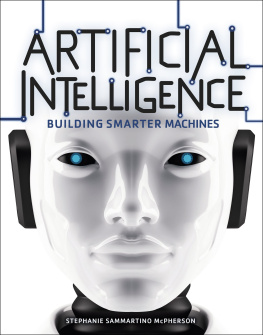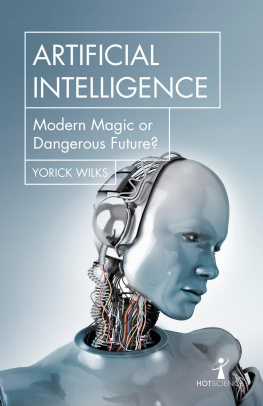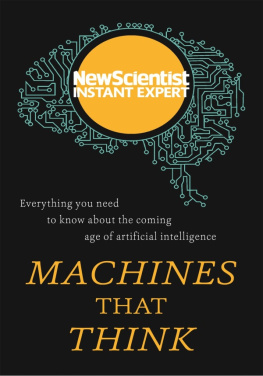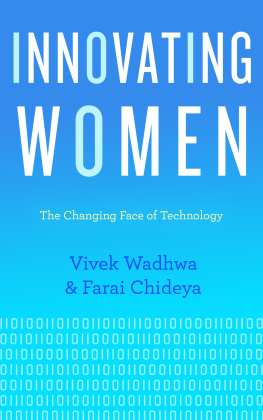THE DRIVER IN THE DRIVERLESS CAR
VIVEK WADHWA WITH ALEX SALKEVER
THE DRIVER IN THE DRIVERLESS CAR
HOW OUR TECHNOLOGY CHOICES WILL CREATE THE FUTURE

The Driver in the Driverless Car
Copyright 2017 by Vivek Wadhwa and Alex Salkever
All rights reserved. No part of this publication may be reproduced, distributed, or transmitted in any form or by any means, including photocopying, recording, or other electronic or mechanical methods, without the prior written permission of the publisher, except in the case of brief quotations embodied in critical reviews and certain other noncommercial uses permitted by copyright law. For permission requests, write to the publisher, addressed Attention: Permissions Coordinator, at the address below.

Berrett-Koehler Publishers, Inc.
1333 Broadway, Suite 1000
Oakland, CA 94612-1921
Tel: (510) 817-2277, Fax: (510) 817-2278
www.bkconnection.com
Ordering information for print editions
Quantity sales. Special discounts are available on quantity purchases by corporations, associations, and others. For details, contact the Special Sales Department at the Berrett-Koehler address above.
Individual sales. Berrett-Koehler publications are available through most bookstores. They can also be ordered directly from Berrett-Koehler: Tel: (800) 929-2929; Fax: (802) 864-7626; www.bkconnection.com Orders for college textbook/course adoption use. Please contact BerrettKoehler: Tel: (800) 929-2929; Fax: (802) 864-7626.
Orders by U.S. trade bookstores and wholesalers. Please contact Ingram Publisher Services, Tel: (800) 509-4887; Fax: (800) 838-1149; E-mail: customer . Ordering for details about electronic ordering.
Berrett-Koehler and the BK logo are registered trademarks of Berrett-Koehler Publishers, Inc.
First Edition
Hardcover print edition ISBN 978-1-62656-971-3
PDF e-book ISBN 978-1-62656-972-0
IDPF e-book ISBN 978-1-62656-973-7
2017-1
Produced by BookMatters; copyedited by Tanya Grove; proofread by Janet Reed Blake; indexed by Leonard Rosenbaum; cover by Rob Johnson, Toprotype, Inc.
CONTENTS
PART ONE
The Here and Now
PART TWO
Does the Technology Have the Potential to Benefit Everyone Equally?
.
PART THREE
What Are the Risks and the Rewards?
PART FOUR
Does the Technology Foster Autonomy or Dependency?
PREFACE
Not long ago, I was very pessimistic about the future. I was worried about hunger and poverty, disease, overpopulation. I believed that the world would run out of clean water and energy and that we would be fighting world wars over scarce resources.
Today, I talk about this being the greatest period in history, when we will solve the grand challenges of humanity and enter an era of enlightenment and exploration such as we saw in my favorite TV series, Star Trek. Yes, I grew up dreaming of tricorders, replicators, and androids and wanting to be an astronaut so that I could join Starfleet Academy. Didnt all the people from my generation, of the 60s?
At Stanford, Duke, and Singularity universities, and now at Carnegie Mellon, I have spent the past six years researching the advances in technology that are finally making science fiction a reality. It truly is amazing what is possible, as I will explain in this book. But I have come to realize that reaching Utopia will take vigilance and effort: like the course of a game of snakes and ladders, our path is strewn with hazards.
My research has made me acutely aware of the dangers in advanced technologies. These are moving faster than people can absorb changeand offer both unprecedented rewards and unpredictable hazards.
As a society, we can make amazing things happen; and the more we understand, the better our decision making will beand the greater the odds that we head toward Star Trek. Todays technology changes are happening so quickly and are so overwhelming that all of us including technologistscan benefit from access to new tools for considering and managing them. I wrote this book with the help of my good friend and writing guru, Alex Salkever, in order to provide such tools, because I believe in the power of choice and the greater judgment of involved citizens. We hope that it will help you deal with the challenges that new technologies raise now and in the future.
INTRODUCTION
It is a warm autumn morning, and I am walking through downtown Mountain View, California, when I see it. A small vehicle that looks like a cross between a golf cart and a Jetsonesque bubble-topped spaceship glides to a stop at an intersection. Someone is sitting in the passenger seat, but no one seems to be sitting in the driver seat. How odd, I think. And then I realize I am looking at a Google car. The technology giant is headquartered in Mountain View, and the company is road-testing its diminutive autonomous cars there.
This is my first encounter with a fully autonomous vehicle on a public road in an unstructured setting.
The Google car waits patiently as a pedestrian passes in front of it. Another car across the intersection signals a left-hand turn, but the Google car has the right of way. The automated vehicle takes the initiative and smoothly accelerates through the intersection. The passenger, I notice, appears preternaturally calm.
I am both amazed and unsettled. I have heard from friends and colleagues that my reaction is not uncommon. A driverless car can challenge many assumptions about human superiority to machines.
Though I live in Silicon Valley, the reality of a driverless car is one of the most startling manifestations of the future unknowns we all face in this age of rapid technology development. Learning to drive is a rite of passage for people in materially rich nations (and becoming so in the rest of the world): a symbol of freedom, of power, and of the agency of adulthood, a parable of how brains can overcome physical limitations to expand the boundaries of what is physically possible. The act of driving a car is one that, until very recently, seemed a problem only the human brain could solve.
Driving is a combination of continuous mental risk assessment, sensory awareness, and judgment, all adapting to extremely variable surrounding conditions. Not long ago, the task seemed too complicated for robots to handle. Now, robots can drive with greater skill than humansat least on the highways. Soon the public conversation will be about whether humans should be allowed to take control of the wheel at all.
This paradigm shift will not be without costs or controversies. For sure, widespread adoption of autonomous vehicles will eliminate the jobs of the millions of Americans whose living comes of driving cars, trucks, and buses (and eventually all those who pilot planes and ships). We will begin sharing our cars, in a logical extension of Uber and Lyft. But how will we handle the inevitable software faults that result in human casualties? And how will we program the machines to make the right decisions when faced with impossible choicessuch as whether an autonomous car should drive off a cliff to spare a busload of children at the cost of killing the cars human passenger?
I was surprised, upon my first sight of a Google car on the street, at how mixed my emotions were. Ive come to realize that this emotional admixture reflects the countercurrents that the bow waves of these technologies are rocking all of us with: trends toward efficiency, instantaneity, networking, accessibility, and multiple simultaneous media streams, with consequences in unemployment, cognitive and social inadequacy, isolation, distraction, and cognitive and emotional overload.
Next page









